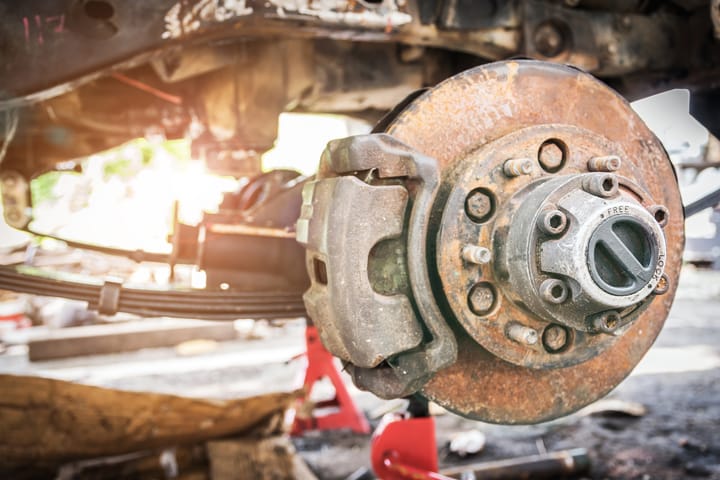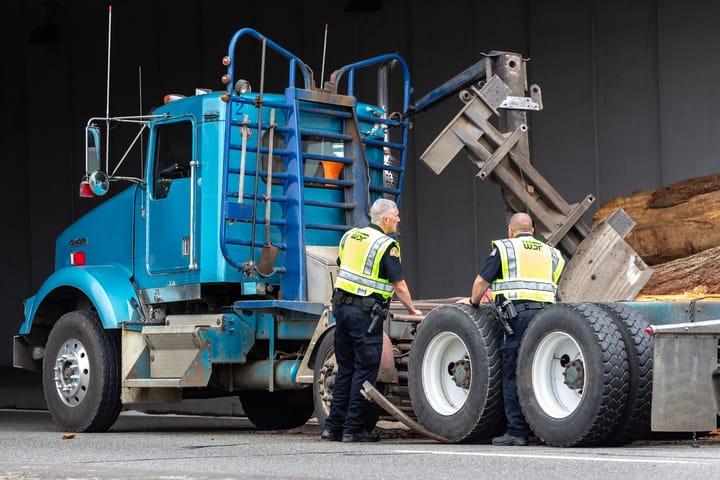The Worst Places to Get Inspected: Where Commercial Vehicle Inspections Take the Longest
An analysis of 8.4 million inspection records reveals dramatic differences in inspection times across the United States.
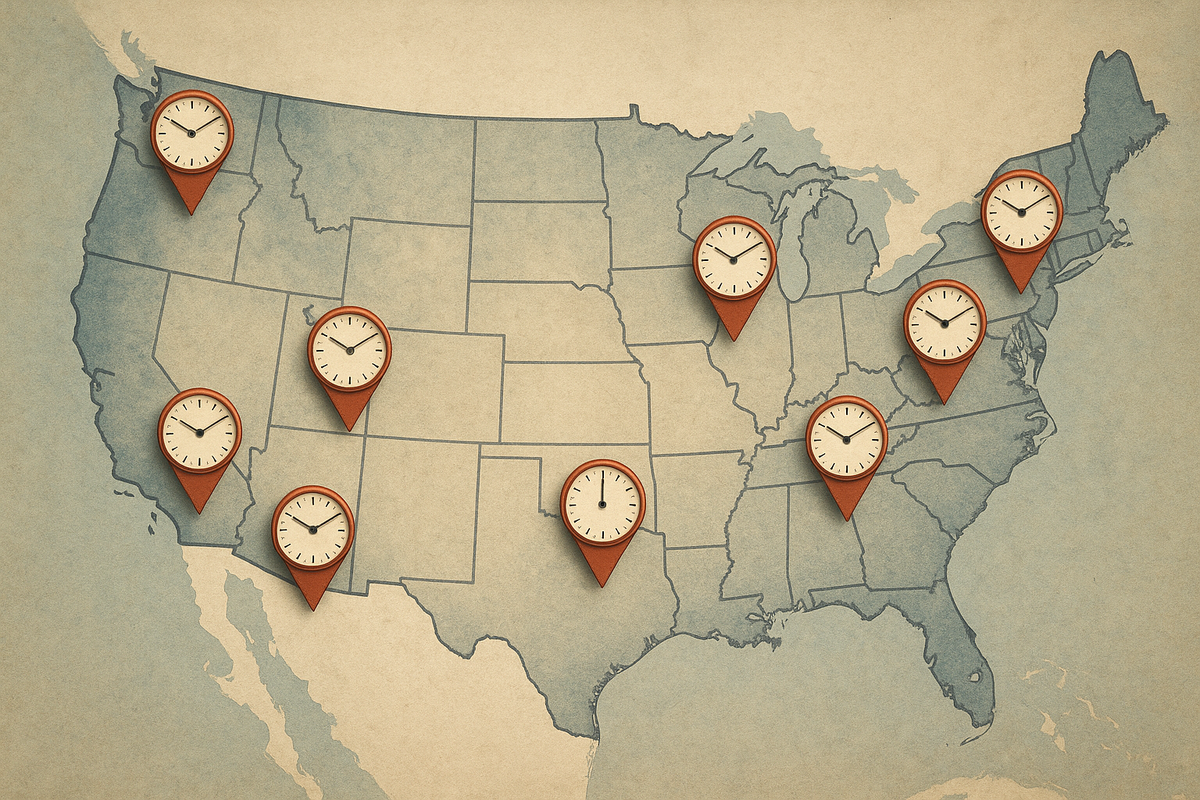
An analysis of 8.4 million inspection records reveals dramatic differences in inspection times across the United States
If you're a commercial truck driver, the location where you get inspected can mean the difference between a 20-minute stop and a 2.5-hour ordeal. Our analysis of over 8 million commercial vehicle inspections has uncovered shocking disparities in inspection durations across states, counties, and specific inspection locations.
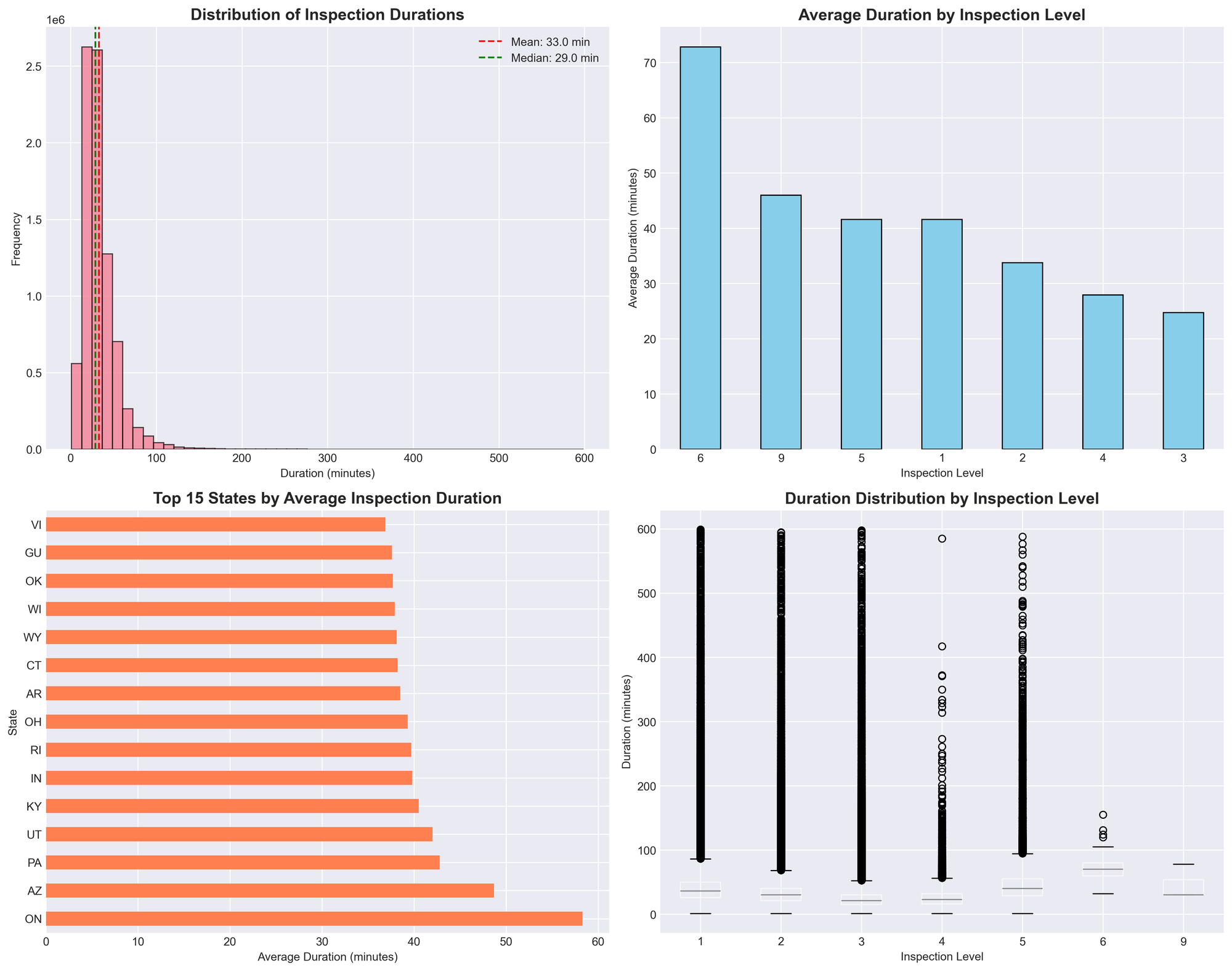
The 148-Minute Inspection: America's Slowest Inspection Points
Imagine sitting at an inspection station for nearly two and a half hours. That's the reality for drivers undergoing Level 1 inspections at location 10349A in Washington County, New York, where the average inspection takes a staggering 148 minutes. To put this in perspective, that's enough time to watch a full-length movie, grab lunch, and still have time left over.
This isn't an isolated case. Several inspection locations consistently clock in at over 100 minutes for Level 1 inspections:
-
Washington County, NY (Location 10251): 140 minutes
-
Albany County, NY (Location 12001A): 139 minutes
-
Bedford County, PA (Location 134): 135 minutes
-
Schenectady County, NY (Location 10726A): 133 minutes
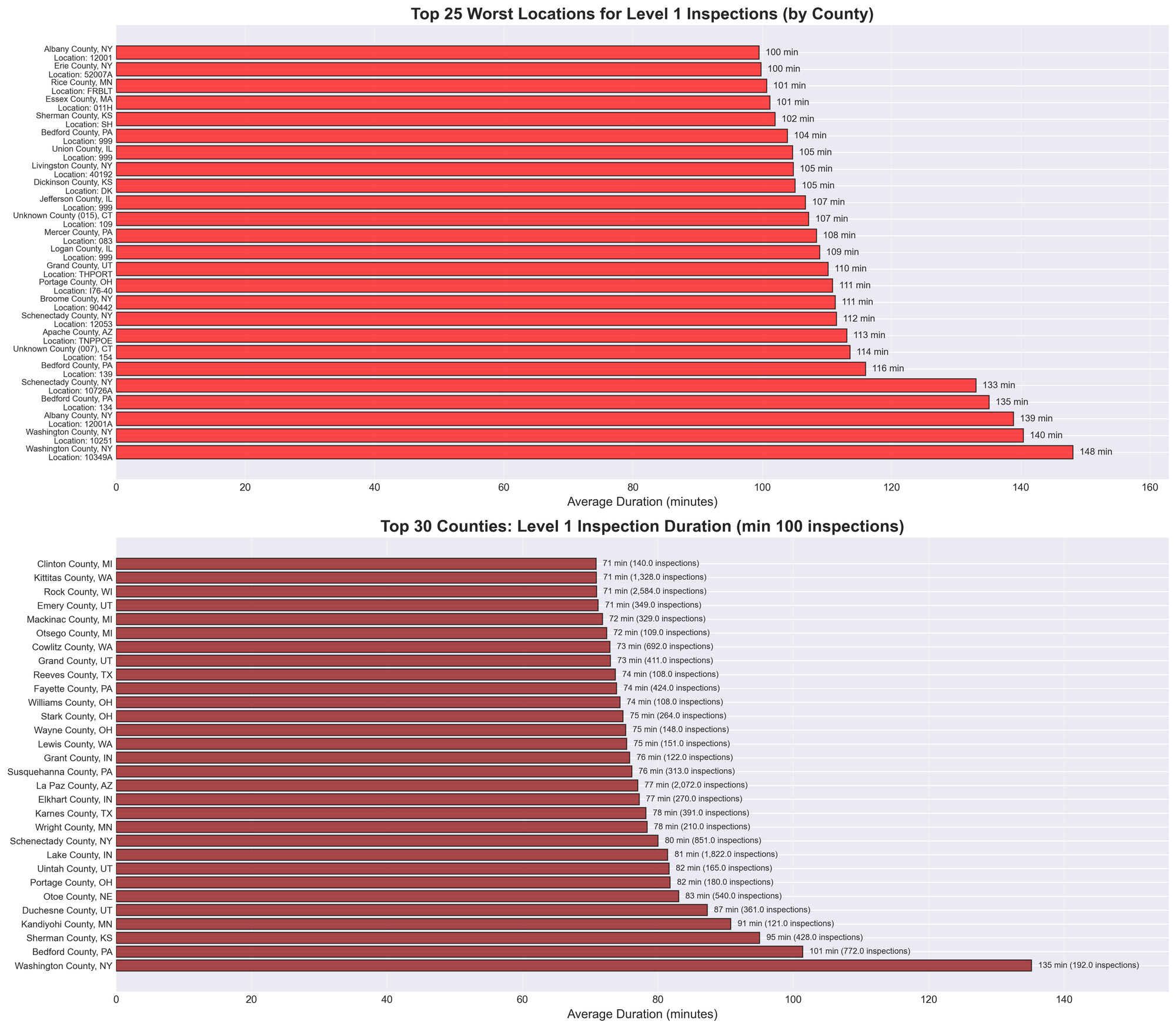
Why Do Inspection Times Vary So Dramatically?
The data reveals that inspection duration isn't just about the type of inspection—it's heavily influenced by geography. While the national average inspection takes 33 minutes, some states and counties consistently perform inspections that take nearly twice as long.
The State-by-State Breakdown
Arizona takes the crown as the state with the longest average inspection times at 48.7 minutes—nearly 50% longer than the national average. Other states with notably long inspection times include:
- Pennsylvania: 42.8 minutes
- Utah: 42.0 minutes
- Kentucky: 40.5 minutes
- Indiana: 39.8 minutes

For Level 1 inspections specifically (the most comprehensive inspection type), the situation is even more extreme:
- Arizona: 64.1 minutes
- Connecticut: 60.5 minutes
- Indiana: 60.1 minutes
- Ohio: 58.2 minutes
The Hidden Cost of Long Inspections
These extended inspection times aren't just inconvenient—they represent a significant economic burden. Consider a driver stuck in a 148-minute inspection:
- Lost driving time: 2.5 hours of potential road time
- Delayed deliveries: Potential late fees and damaged customer relationships
- Hours of Service impact: Eating into limited driving hours
- Fuel costs: Idling during extended inspections
For a trucking company running multiple vehicles through these high-duration inspection points, the cumulative impact on operational efficiency and profitability can be substantial.
The Inspection Level Factor
Not all inspections are created equal. Our analysis shows dramatic differences based on inspection level:
- Level 6 inspections (radioactive materials): 72.8 minutes average
- Level 1 inspections (full vehicle and driver): 41.6 minutes average
- Level 3 inspections (driver-only): 24.7 minutes average
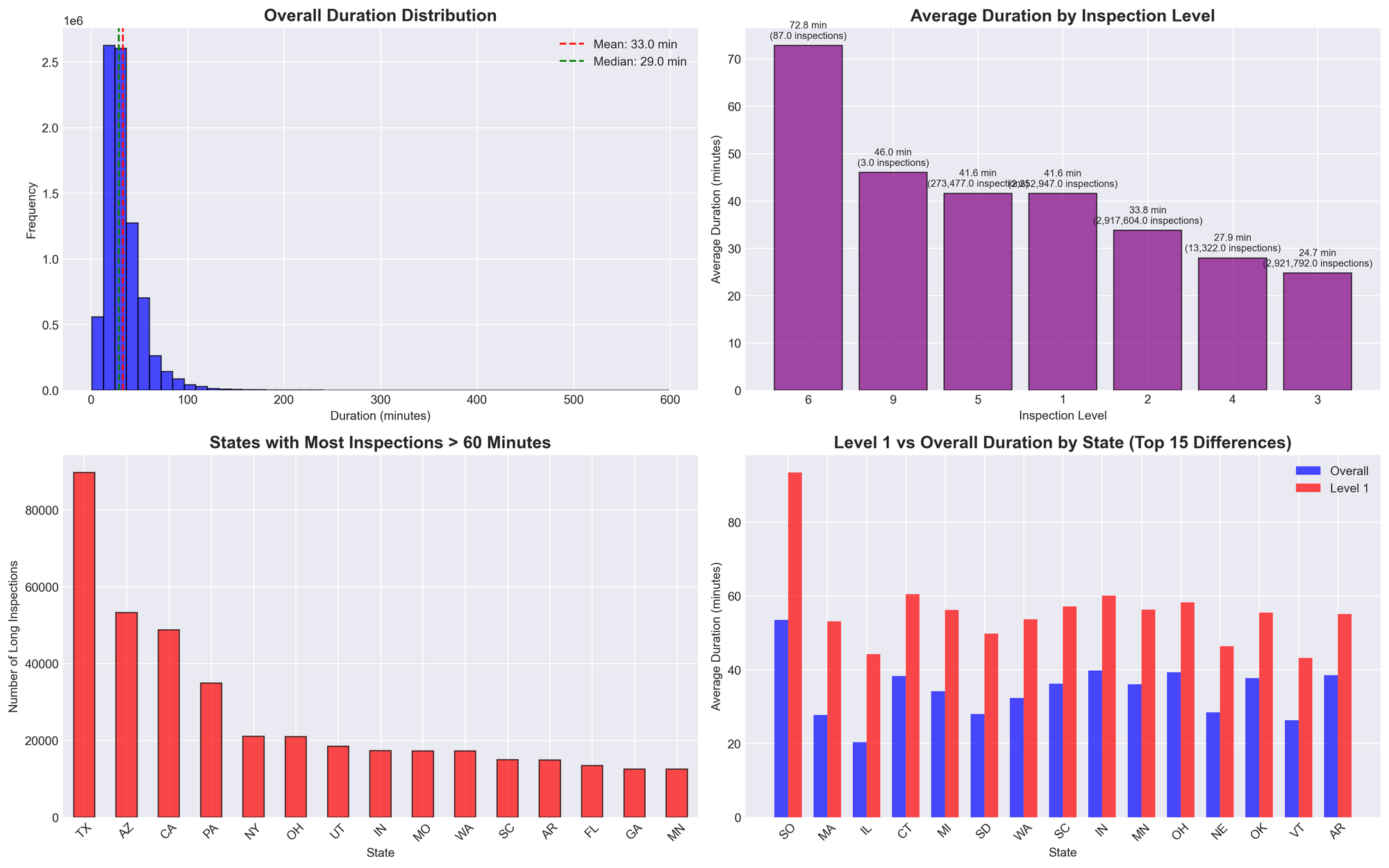
Level 1 inspections, which involve a complete examination of both driver and vehicle, take 68% longer than Level 3 driver-only inspections. This makes sense given the comprehensive nature of Level 1 inspections, but the geographic variations suggest that procedural differences between locations play a major role.
Counties in Crisis: Where Time Stands Still
At the county level, the disparities become even more pronounced. The worst-performing counties for overall inspection duration include:
- Washington County, NY: 95.3 minutes average
- Karnes County, TX: 70.4 minutes
- Duchesne County, UT: 69.8 minutes
- Gonzales County, TX: 69.0 minutes
- Grand County, UT: 64.7 minutes
These counties consistently show inspection times that are 2-3 times the national average, regardless of inspection type.
Geographic Patterns: East vs. West
An interesting pattern emerges when mapping inspection durations: Western states, particularly Arizona and Utah, show consistently longer inspection times. Several factors might contribute to this:
- Border proximity: Many high-duration locations are near international borders
- Traffic volume: Higher truck traffic may lead to backlogs
- Staffing levels: Resource constraints could slow processing
- Local procedures: Different interpretations of inspection requirements
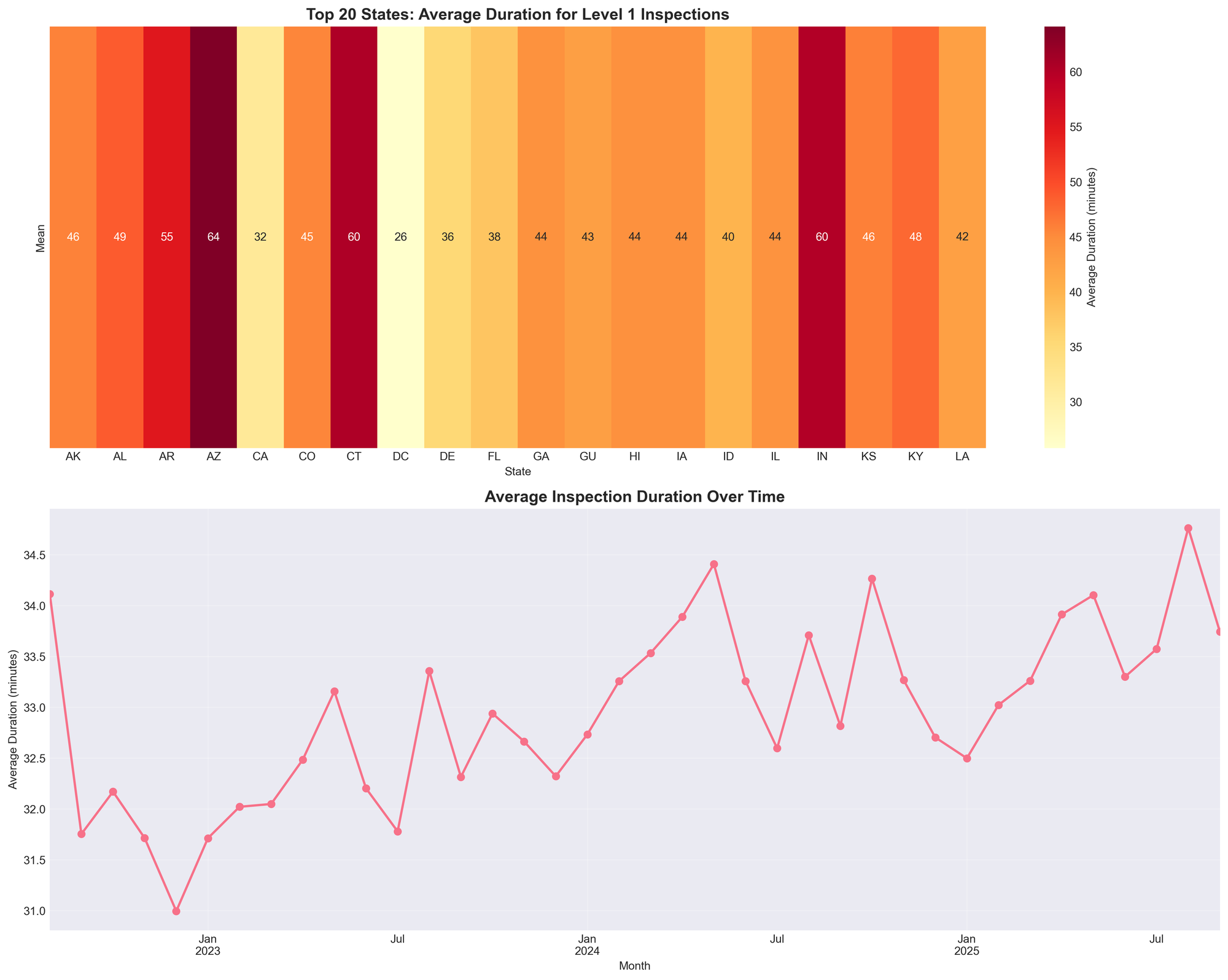
What This Means for Drivers and Fleet Managers
Route Planning Implications
Smart route planning now needs to consider not just distance and traffic, but inspection duration risk. A route through Arizona might be shorter in miles but could add hours to travel time if an inspection is likely.
Operational Strategies
Fleet managers should consider:
- Building buffer time into schedules for routes through high-duration states
- Driver education about inspection hotspots
- Alternative routing when time-sensitive loads are involved
- Data tracking to identify patterns in their own fleet's inspection experiences
The Human Factor
For drivers, knowing that an inspection in Washington County, NY might take 2.5 hours versus 30 minutes elsewhere can help with:
- Mental preparation for long waits
- Meal and rest planning around potential inspection delays
- Communication with dispatch about realistic arrival times
The Call for Standardization
These dramatic disparities raise important questions about inspection standardization across the United States. Why should the same Level 1 inspection take 148 minutes in one location and 30 minutes in another?
The data suggests that while inspection types are standardized, the execution varies wildly by location. This inconsistency creates:
- Unpredictability for the transportation industry
- Competitive disadvantages for carriers operating in high-duration areas
- Potential safety compromises if inspectors feel pressured to rush in some locations while taking excessive time in others
Moving Forward: What Needs to Change
The transportation industry and regulatory bodies should work together to:
- Investigate root causes of extreme duration outliers
- Share best practices from efficient inspection locations
- Standardize procedures to reduce geographic variation
- Invest in technology to streamline inspection processes
- Monitor and report inspection duration metrics publicly
Conclusion: Time Is Money, and Geography Is Destiny
In the world of commercial vehicle inspections, where you get inspected matters as much as what gets inspected. The difference between a 30-minute inspection and a 148-minute inspection isn't just time—it's money, stress, and efficiency.
For an industry where every minute counts, these geographic disparities in inspection times represent a hidden tax on certain routes and regions. Until these issues are addressed, drivers and fleet managers need to plan accordingly, building these potential delays into their operational strategies.
The next time you see a truck at an inspection station, remember: depending on their location, that driver might be there for 20 minutes or 2.5 hours. In the world of commercial vehicle inspections, geography truly is destiny.
Data analysis based on 8,379,232 valid inspection records from the FMCSA database. Inspection durations calculated from recorded start and end times, excluding outliers and invalid data.

